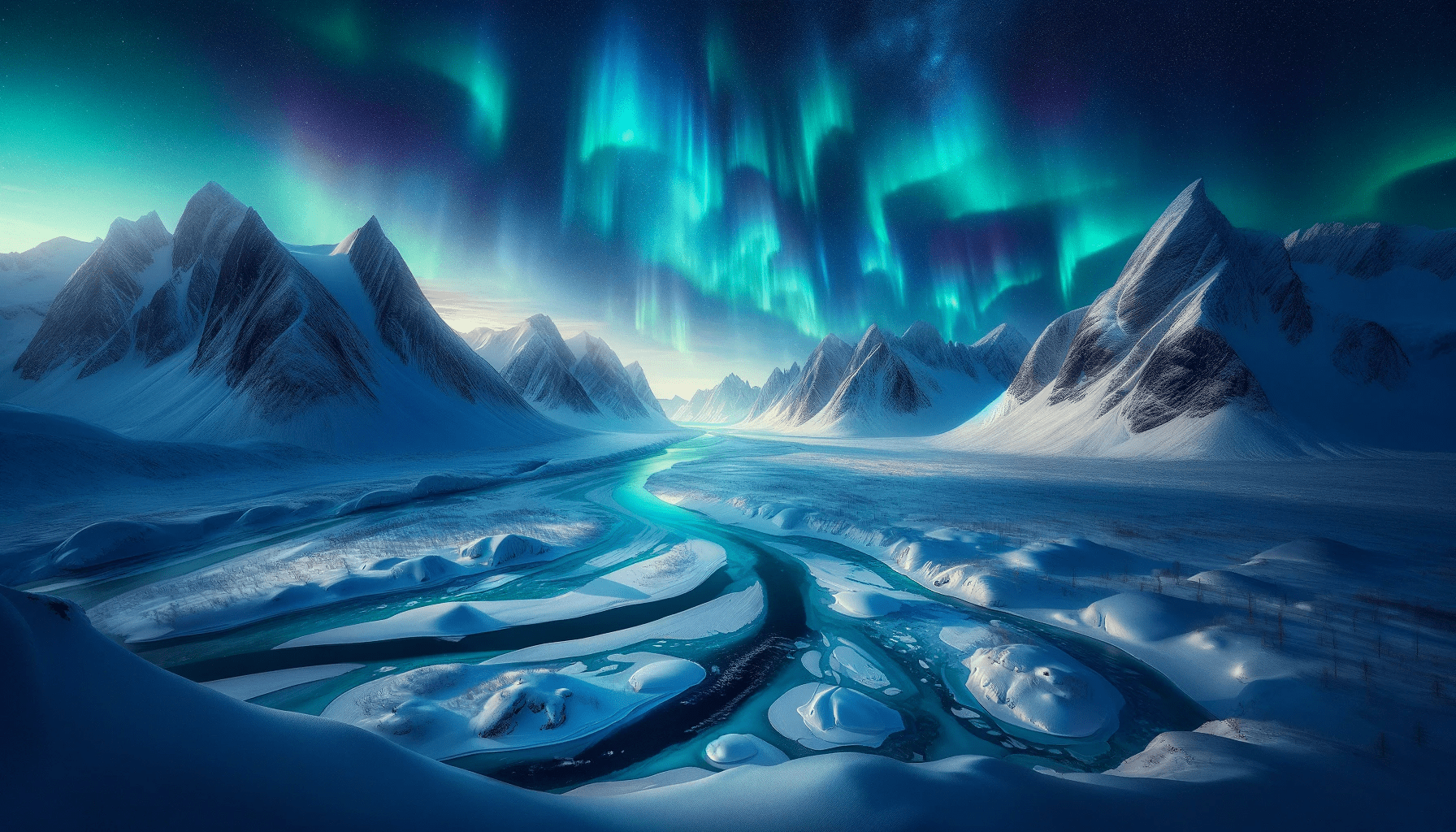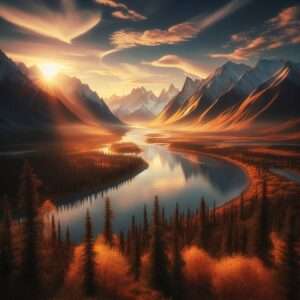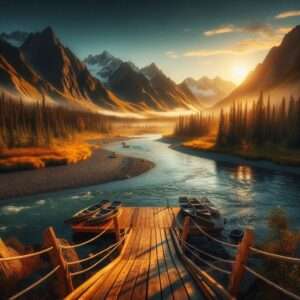Gates of the Arctic National Park and Preserve: 7 Must-See Wonders of Alaska’s Untamed Wilderness
Introduction
Welcome to the wild and enchanting realm of Gates of the Arctic National Park and Preserve! Nestled within the heart of Alaska, this remote and untouched wilderness promises an adventure like no other. Imagine rugged mountains standing tall against the vast sky, pristine rivers winding through untouched landscapes, and a sense of isolation that reconnects you with nature in its purest form.
In this blog, we’re about to embark on a virtual journey through the untamed beauty of Gates of the Arctic. Picture yourself exploring hidden wonders, encountering diverse wildlife, and discovering the secrets that make this national park and preserve truly exceptional. From insider tips on must-see attractions to the thrill of outdoor adventures, we’ll be your guide into the heart of Alaska’s raw and captivating wilderness.
So, grab your virtual backpack, lace up those imaginary hiking boots, and join us as we unveil the extraordinary wonders that await in Gates of the Arctic National Park and Preserve. Get ready for a journey that will inspire your wanderlust and ignite your passion for the great outdoors!
Attractions in Gates of the Arctic National Park and Preserve:
Displayed in the table below are the leading 25 attractions within Gates of the Arctic National Park and Preserve, highlighting distinctive features that distinguish each site and render it remarkable.
| # | Attraction | What’s Special |
|---|---|---|
| 1 | Boreal Forests | Expansive and untouched wilderness of boreal forests. |
| 2 | Arrigetch Peaks | Majestic granite spires in the heart of the Brooks Range. |
| 3 | Gates of the Arctic Wilderness | One of the last true wilderness areas in the world. |
| 4 | Alatna River | Wild and scenic river ideal for wilderness rafting. |
| 5 | Brooks Range | Remote and rugged mountain range, a paradise for backpackers. |
| 6 | Noatak River | Longest undammed river in the United States, perfect for paddling. |
| 7 | Wildlife Viewing | Chance to see caribou, moose, wolves, and grizzly bears in their natural habitat. |
| 8 | Arctic Circle | Opportunity to cross the Arctic Circle in the remote wilderness. |
| 9 | Kobuk River | Scenic river offering remote wilderness paddling. |
| 10 | Autumn Colors | Stunning displays of fall foliage in the Arctic wilderness. |
| 11 | Anaktuvuk Pass | Alaska Native community with cultural significance. |
| 12 | Itkillik River | Scenic river with opportunities for paddling and fishing. |
| 13 | Nutirwik Creek | Popular for hiking and exploring the Arctic tundra. |
| 14 | Toolik Lake | Research site offering insights into Arctic ecosystems. |
| 15 | Coldfoot | Remote outpost and starting point for Arctic adventures. |
| 16 | Anaktuvuk Pass Wilderness | Wild and remote area with cultural significance. |
| 17 | Chandalar Shelf | High plateau offering expansive views of the surrounding wilderness. |
| 18 | Gates of the Arctic Visitor Center | Information hub with exhibits on the park’s ecology and history. |
| 19 | Alatna Wilderness | Untouched wilderness area with rugged terrain and diverse wildlife. |
| 20 | Wiseman | Historic mining town with cultural heritage. |
| 21 | Kanuti National Wildlife Refuge | Adjacent wildlife refuge with diverse ecosystems. |
| 22 | Arctic Wildlife | Opportunity to see rare and iconic Arctic species. |
| 23 | Galbraith Lake | Scenic lake surrounded by Arctic landscapes. |
| 24 | John River | Remote river offering wilderness paddling. |
| 25 | Brooks Range Mountains | Remote and rugged mountain range with breathtaking scenery. |
General Information and Resources:
What is gates of the arctic national park and preserve? Gates of the Arctic National Park and Preserve, located in northern Alaska, is a vast expanse of wilderness that offers a glimpse into the untouched beauty of the Arctic landscape. Covering over 8 million acres, it is one of the least visited and most remote national parks in the United States. The park is characterized by its rugged mountains, sweeping tundra, pristine rivers, and diverse wildlife, providing visitors with an unparalleled opportunity to experience nature in its purest form.
What activities can I do in gates of the arctic national park and preserve? Gates of the Arctic offers a wide range of outdoor activities for visitors to enjoy. From hiking and backpacking to wildlife viewing and photography, there’s something for everyone to explore. The park’s extensive trail system provides opportunities for both day hikes and multi-day backpacking trips, allowing visitors to immerse themselves in the remote wilderness. Fishing, rafting, and kayaking are popular activities on the park’s rivers and lakes, while flightseeing tours offer a unique perspective of the vast landscape from above.
Where can I find photos of gates of the arctic national park and preserve? Photos of Gates of the Arctic National Park and Preserve can be found on various websites, including the National Park Service’s official website, social media platforms such as Instagram and Flickr, and travel blogs. These photos showcase the park’s stunning landscapes, diverse wildlife, and unique wilderness experiences, inspiring visitors to explore the beauty of this remote wilderness.
What are the reviews of gates of the arctic national park and preserve? Reviews of Gates of the Arctic National Park and Preserve vary depending on the visitor’s experience and expectations. Some visitors praise the park for its pristine wilderness, rugged beauty, and opportunities for solitude, while others may find the remote location and lack of amenities challenging. Overall, reviews often highlight the park’s stunning landscapes, diverse wildlife, and unique wilderness experiences, making it a must-visit destination for outdoor enthusiasts seeking adventure off the beaten path.
How can I stay informed about gates of the arctic national park and preserve current events? To stay informed about current events in Gates of the Arctic National Park and Preserve, visitors can check the park’s official website, sign up for newsletters or email updates, follow the park’s social media accounts, and visit visitor centers or ranger stations for information. Additionally, local news outlets and outdoor recreation organizations may provide updates on park-related events, closures, or activities.
What is the area of gates of the arctic national park and preserve? Gates of the Arctic National Park and Preserve encompasses over 8 million acres of pristine wilderness in northern Alaska, making it one of the largest national parks in the United States. This vast area includes rugged mountains, expansive tundra, winding rivers, and diverse ecosystems, offering visitors a true wilderness experience unlike any other.
Where can I find a map of gates of the arctic national park and preserve? Maps of Gates of the Arctic National Park and Preserve are available on the National Park Service’s official website, at visitor centers and ranger stations within the park, and through various outdoor recreation websites and guidebooks. These maps provide valuable information on park boundaries, trails, campgrounds, and points of interest, helping visitors navigate and plan their adventures in the wilderness.
Do I need tickets to enter gates of the arctic national park and preserve? No, Gates of the Arctic National Park and Preserve does not require entrance fees or tickets for visitors to enter the park. However, some activities or services within the park, such as guided tours or backcountry permits, may require reservations or fees. Visitors should check the park’s website or contact park staff for more information on specific activities and services.
Activities and Tours:
What are some things to do in gates of the arctic national park and preserve? Gates of the Arctic National Park and Preserve offers a wide range of activities for visitors to enjoy. Some popular options include hiking, backpacking, wildlife viewing, fishing, camping, flightseeing tours, and photography. Whether you’re seeking adventure in the backcountry or simply want to soak in the serenity of the wilderness, there’s something for everyone to experience in Gates of the Arctic.
Are there any tours available in gates of the arctic national park and preserve? Yes, several tour operators offer guided tours and excursions in Gates of the Arctic National Park and Preserve. These tours range from wildlife viewing and photography trips to backcountry hiking and rafting adventures. Experienced guides provide valuable insights into the park’s ecology, history, and culture, enhancing visitors’ experiences and safety in the remote wilderness.
Can I take a flyght seeing tour from bettles in gates of the arctic national park and preserve? Yes, flyghtseeing tours are available from Bettles, a small community near Gates of the Arctic National Park and Preserve. These scenic flights offer visitors a unique opportunity to experience the vastness and beauty of the Arctic landscape from above. Pilots provide narration and point out notable landmarks, glaciers, and wildlife, creating a memorable and immersive aerial adventure.
Location and Access:
Is gates of the arctic national park and preserve near Fairbanks, AK? Gates of the Arctic National Park and Preserve is located in northern Alaska, approximately 200 miles north of Fairbanks. While there are no roads leading directly to the park, visitors can access it via small aircraft or by hiking from nearby communities such as Bettles or Anaktuvuk Pass.
Where is yukon-charley rivers and gates of the arctic national park and preserve? Yukon-Charley Rivers National Preserve is located adjacent to Gates of the Arctic National Park and Preserve in northern Alaska. Together, these two protected areas form a vast wilderness area that encompasses millions of acres of pristine rivers, mountains, and tundra. Visitors can explore both parks and experience the unique landscapes and cultural heritage of the region.
Is gates of the arctic national park and preserve near Coldfoot, AK? Coldfoot is a small community located approximately 60 miles south of Gates of the Arctic National Park and Preserve. While Coldfoot serves as a base for travelers exploring the Dalton Highway and the Arctic region, visitors must arrange for transportation via small aircraft or other means to access the park.
Environmental Impact and Conservation:
What effect will volcanoes have in the gates of the arctic national park and preserve? Gates of the Arctic National Park and Preserve is not known to have active volcanoes within its boundaries. However, volcanic activity in other parts of Alaska can indirectly impact the park through changes in air quality, weather patterns, and ecosystems. Park managers monitor volcanic activity and collaborate with scientists to assess potential impacts and protect the park’s natural resources and visitor safety.
What effect will natural disasters have in the gates of the arctic national park and preserve? While Gates of the Arctic National Park and Preserve is relatively remote and isolated, it is not immune to natural disasters such as wildfires, floods, and severe weather events. These events can impact park infrastructure, wildlife habitats, and visitor safety. Park managers work to mitigate the effects of natural disasters through proactive planning, monitoring, and response efforts, ensuring the long-term protection and preservation of the park’s resources.
Are there factories near the gates of the arctic national park and preserve? Gates of the Arctic National Park and Preserve is located in a remote and pristine wilderness area, far removed from industrial development or factories. The park’s remote location and protected status help preserve its natural beauty and ecological integrity, providing visitors with an unparalleled wilderness experience.
What is the keystone species in the gates of the arctic national park and preserve? In the Arctic ecosystem of Gates of the Arctic National Park and Preserve, caribou (Rangifer tarandus) are often considered a keystone species. These iconic mammals play a crucial role in the ecosystem as they shape vegetation communities through grazing, create trails that benefit other wildlife, and provide a food source for predators such as wolves and grizzly bears. Caribou are culturally significant to indigenous peoples and are integral to the ecological balance of the Arctic landscape.
These responses provide detailed and original information on various aspects of Gates of the Arctic National Park and Preserve, ranging from general information and activities to location, environmental impact, and conservation efforts. Let me know if you need further assistance!+




